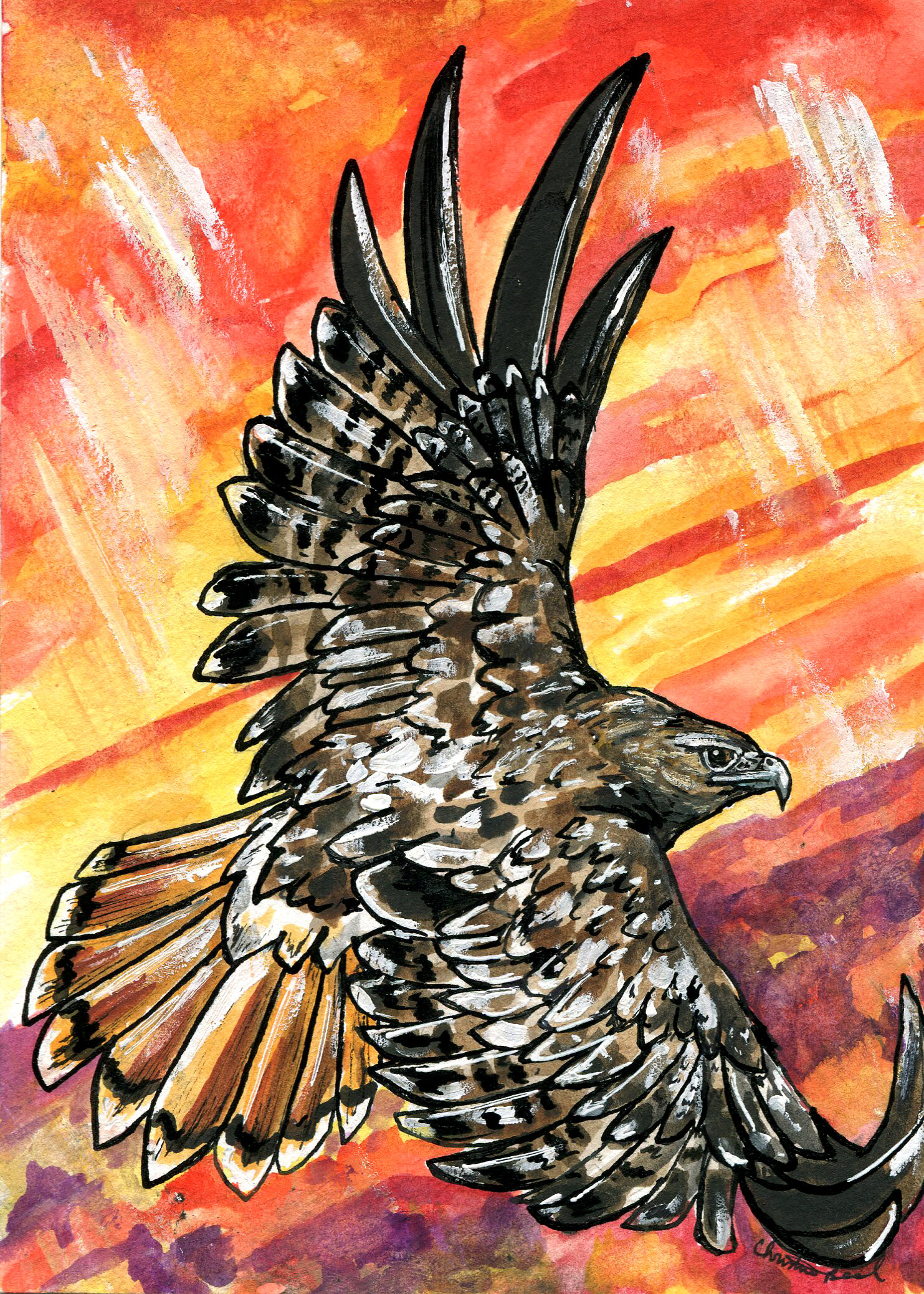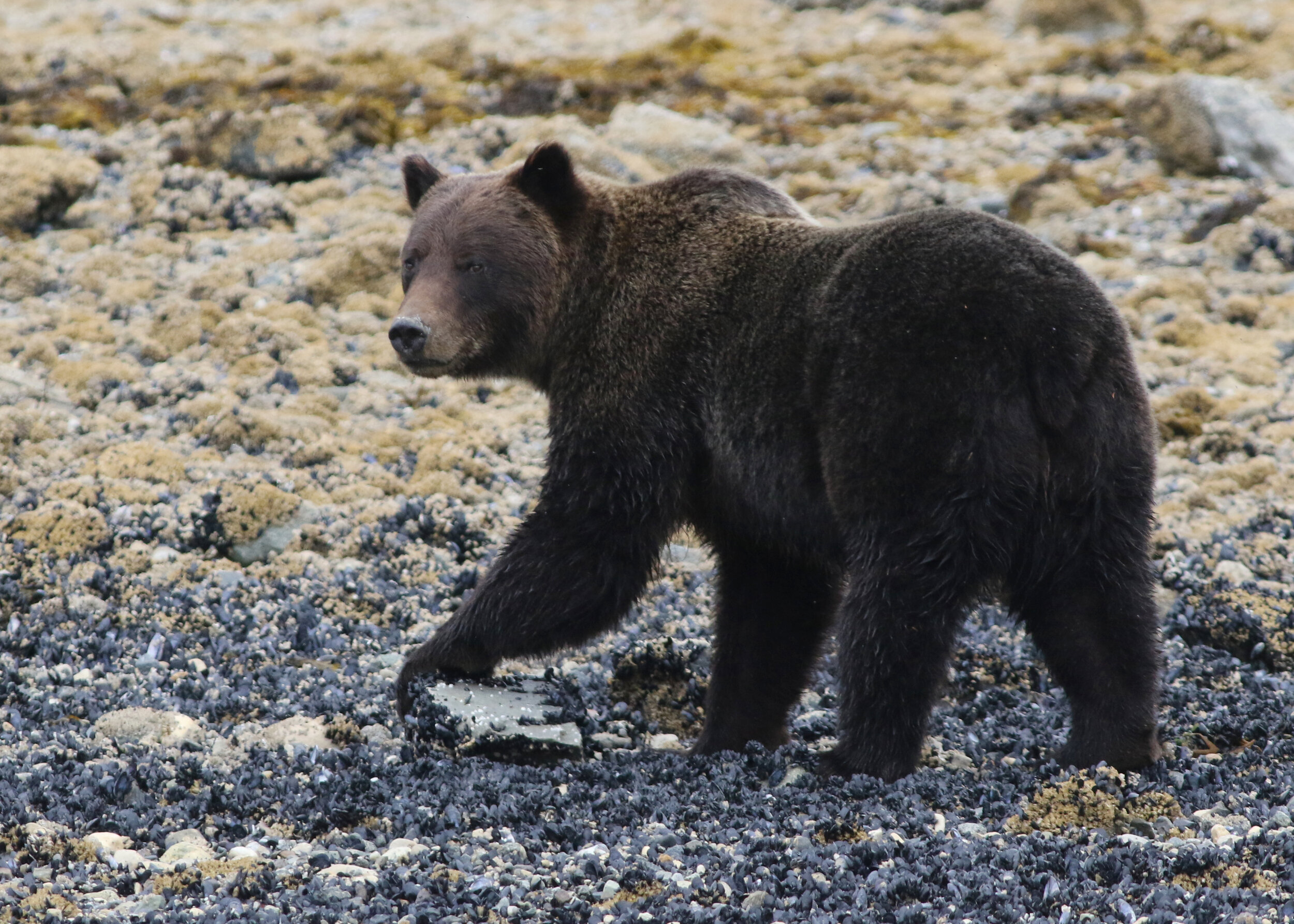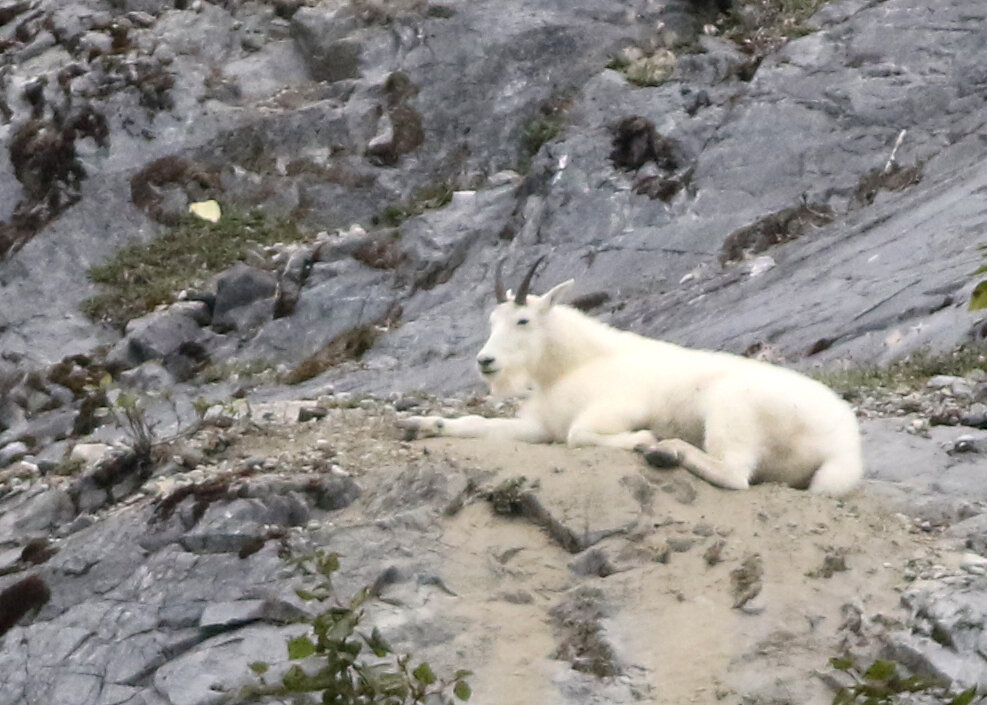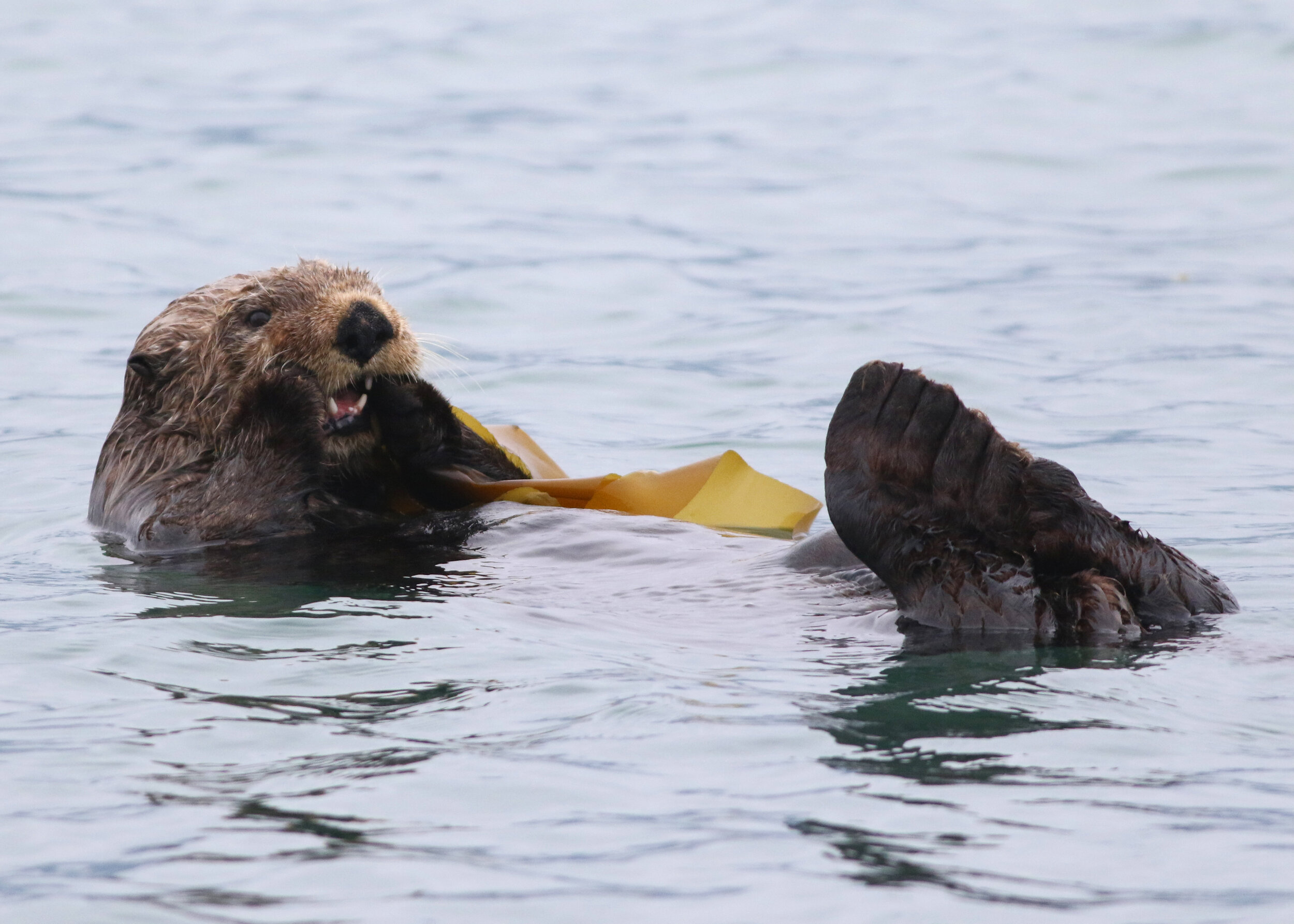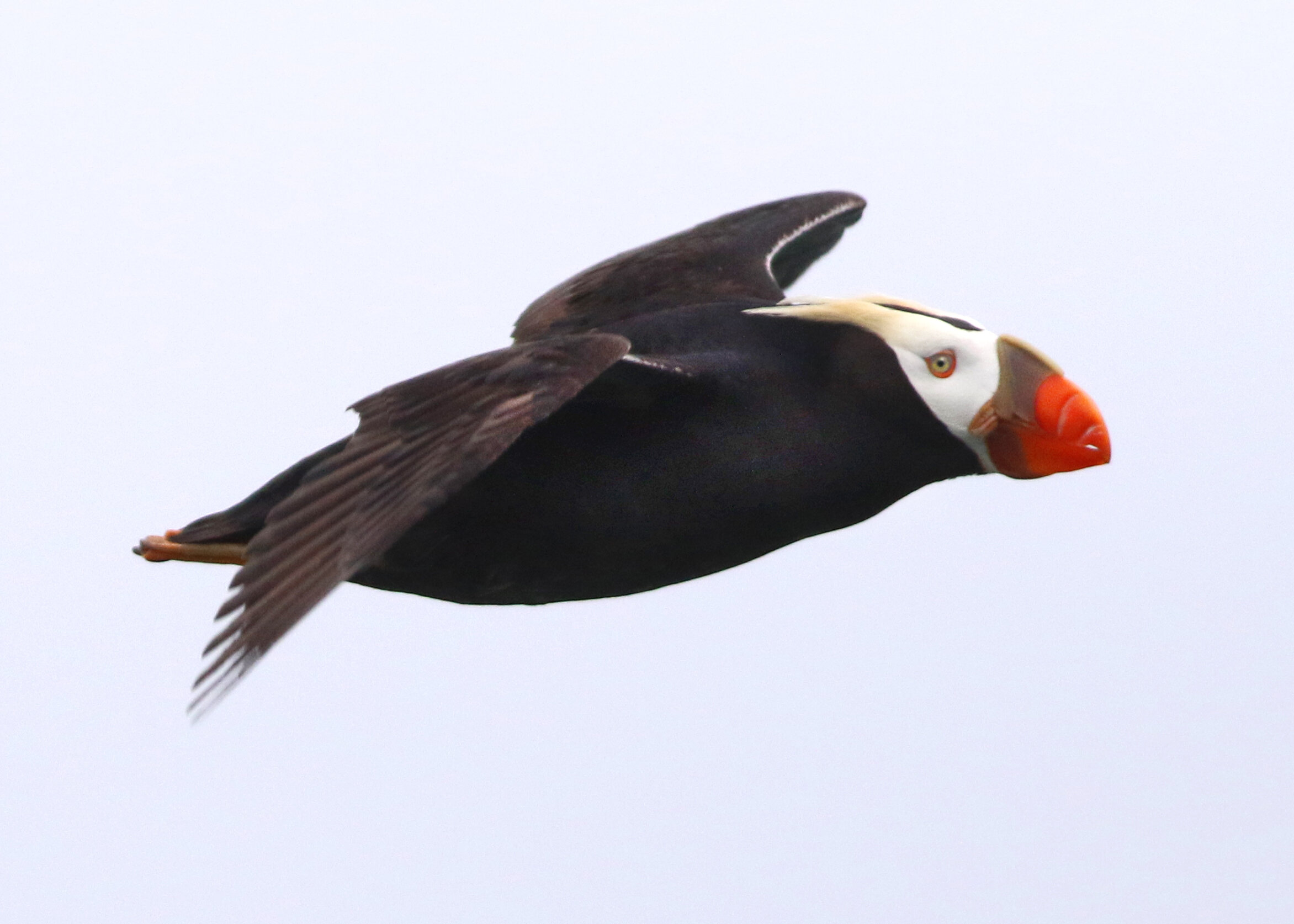Cooper’s Hawk, Accipiter cooperii
Sharp-shinned Hawk, Accipiter striatus
Of all the raptors I most dreaded having to identify, none were more stressful than the Sharp-shinned Hawk/Cooper’s Hawk pairing. Many of my birder friends have told me repeatedly the ways to differentiate the two in flight, but without immediately applying this information to real-live birds it would soon fall out of my head. As an artist, I learned almost all my birds by memorizing field marks and body shape- behavioral identifiers tend to come second for me. But boy oh boy is behavior a wonderful thing for identifying Sharpies and Cooper’s!
Juvenile Sharp-shinned Hawk just after taking off from a snag. Notice the length of the streaking on its chest.
Juvenile Cooper’s Hawk. Notice the streaking on the chest, as well as the curved tail.
Fortunately for me, Sharp-shinned Hawks and Cooper’s Hawks started migrating through Connecticut in steady streams by the end of September. Once there were plenty of birds to watch, I discovered my friends were right: it is pretty straightforward to tell the difference between the two birds based solely on behavior. The more compact Sharp-shinned Hawk does a great “flappity flap-flap” as it flies, with rapid wingbeats in succession before a glide. The larger, longer-winged Cooper’s Hawk has slower, more shallow wingbeats. This is now one of my favorite ways to identify hawks, because I love the sweet satisfaction of identifying a distant speck of a raptor doing a quick wing flap as a solid Sharp-shinned Hawk!
I also discovered that the two accipiters really do have different body shapes. The Sharp-shinned Hawk is more compact and has smaller wings; it resembles a t-shape in flight. The Cooper’s Hawk has a head that is much larger; it looks more like a cross in flight because you can actually see the head extend past the wings. Between the body shape and the wing flaps, I found that it actually becomes very straightforward to tell the two apart.
Even though it is really satisfying to be able to identify them from afar, it is always amazing to get to see these hawks up close. Sharp-shinned Hawks and Cooper’s Hawks have beautiful patterning as both adults and juveniles. The adults of both species have subtle navy heads and backs, orange barring across the chest, and blood-red eyes; the juveniles have orange rusty streaking across their bodies and sharp yellow eyes. At the Quaker Ridge Hawk Watch, we deploy a plastic owl decoy atop a dogwood tree just off of the hawk watch lawn to try to convince smaller hawks to come closer for a better view. It works really well at attracting these accipiters, and a few times a week I would have the chance to see them in beautiful detail as they soared right overhead!
Adult Sharp-shinned Hawk diving at our plastic owl
Juvenile Sharp-shinned Hawk diving at our plastic owl
Now that it is late November, the accipiters have mostly finished migrating through. There are of course a few stragglers, but it is strange to go a whole day without seeing a single one after they were so commonplace. Fortunately for me (but not so much for the little birds at the feeder), a juvenile Sharp-shinned Hawk and a juvenile Cooper’s Hawk appear to have moved into the property. I see them exploding out of the bushes and sprinting across the treelines hunting. Just this week, I was standing beneath our kiosk trying to avoid getting wet in the rain and the Cooper’s Hawk flew in as if from nowhere and landed on the fence outside the lawn. Its appearance was so sudden and so silent that I actually jumped back in surprise. We stared at each other for a split second before it barreled off into the grasses, leaving me feeling sorry for the tiny critters that might not fare as well from such an unexpected encounter!



























